Hi, I’m Charlotte, I write at a fairly modern but large oak table in our home in a Mid-Devonshire village. We moved here 2 years ago after a transient British forces life of moving around the UK and Germany.
Here in my corner of Substack, you will find tales from a homebody who loves the balance of a local micro-adventure; uncomplicated parenting, childhood nostalgia, motherhood musings, lots of seasonal stories, gardening and helpful family ideas and resources. The seasons are entwined throughout our home, and family values and rooted within my personal growth. If you love the pace and patterns of Mother Nature then you’re definitely in the right place.
Welcome to our monthly round-up of what is growing in our garden. After 20 years of being limited to a few planters, I’ve got the gardening bug, big time!
June is such an exciting time in the garden. After holding onto the yellow haze of buttercups and pineapple weed of no-mow May, the compost heap has benefited from the grass cuttings. The sown seeds from Winter and Spring are just right, or in my case a touch leggy and are now planted in their rightful place in the garden. The hunger gap is making way for small harvests for our salad bowl, early broad beans and those first peas. The proud pinks of my favourite biennial the foxglove pop up almost unannounced and I’m passing gardens full of lupins and making mental notes to grow more next year. This is the time of year when I’m wondering what else I can squeeze in ready for the summer and autumn months, when watering becomes a part-time job and I’m hopeful I can sit back, relax a little and enjoy from my sun trap.
Each month I will cover some snapshots/seasonal updates of areas in our garden. There will be a chat about what has worked/didn’t work, what I’m enjoying seeing in other gardens, jobs for the month and any foraging and recipes we have enjoyed. Disclaimer alert…I have no gardening qualifications; I’m learning on the go but what I share is mindful and useful content for other like-minded amateur home gardeners juggling lots of balls! I hope to grow a community that can come together to share their successes, gardening woes and seasonal tips whatever their gardening ability.
So, come with me for a walk around our garden.
Pathway Border
In this first part of the pathway border, there is absinthe wormwood, dog fennel peppermint and some failed (chicken-nibbled) sweet peas around the willow arch. This section needs something else but is pretty dominated by the absinthe foliage. I bought the dogfennel and absinthe Wormwood (cheaply) at an organic farm open day to add something different in texture and variety to this border. I have been told that the dogfennel is known to be helpful as an insecticide and antifungal agent and absinthe wormwood deters a variety of insect pests and has various medicinal benefits.
On to the main pathway with a mix of dahlias, cosmos, calendula, and chrysanthemums. last year’s surviving dahlias, newly placed lagurus ovatus (bunny tails) and garden lady’s mantle. I think I may just spread the seeds I harvested from last year’s pot marigolds (calendula) in the hope they will bloom into the Autumn. They were absolute stars of our border last year. I will invest in a couple of garden centre bushier cosmos this week as I’m a little concerned about a few flowering gaps.
Small Raised Beds by the Coop
Running on from the border is a small raised bed we made which is filled with onions and a few shallots. The chickens turned over the first planted onion sets, thus resulting in a few plug plants (I picked up locally) being planted. I believe a few white onion bulbs may have survived their raking, as the red onions were deemed the most popular to dig up! It will be fun to earth up later in the year and discover which survived! Once we planted the second set of onions and netted the area I wanted to companion plant the carrots alongside the onions. However, my first year of growing carrots is proving tricky as the first direct sowing didn’t take. Hopefully, a second sowing last week will prove more fruitful.
Onto the next raised bed, with various tomatoes and a few marigolds to keep the pests at bay. This is a new corner of the garden for me to plant tomatoes. I usually place them in the sunnier patio but I opted for this change of location, as it’s good to mix planting areas up and experiment! A few rogue onions from the first batch that survived the chicken’s claws have also popped up in here and I should have space in this bed to plant out my leeks in the next few days.
Large Raised Hugelkultur Bed
Head over to my Instagram page to see how we mucked in and put this bed together on a budget.
The broad beans are thriving this year. They have lapped up this cooler, wetter weather here in Devon and the pollinators are in love with them! Another bumper crop is the red and green salad bowl lettuce, planted next to the now bolting dill and spinach. Mingled next to these are a couple of squashes and a crown prince pumpkin of which I haven’t yet decided whether to grow up a trellis to try optimise this sunny space. I’m patiently waiting for the middle of this bed to spot the first sown chard and beetroot leaves. Next are some wonderfully round radishes, a patch of nasturtiums (edible) and a lonely tomato plant which hasn’t made its mind up whether it’s happy there. Lastly, flanking up the sides of the raised bed are 3 bulging potato sacks, courgette plants, sunflowers and soon-to-be cucumber plants.
Potting Shed Patio
Into the mini zippy greenhouse are a few more Dahlias, slow-to-grow Phlox, Rudbeckia and a few other flowers that haven’t taken quite so well. I have a few patio planters of experimental flower beds consisting of corncockle (which is looking promising), a few leggy Mesembryanthemum Harlequin and a neighbouring sage and lavender planter. Next to these experimental planters are last year’s strawberry pots and hanging baskets which all need netting to deter the birds from the first fruits. In the cold frame are some pumpkins planted by each of our children (to save on pumpkin patch visits this year!) and a few cabbages, which I have no clue will go when the time comes.
Established Border
Onto the established border between two varieties of magnolia, Mexican Orange and Japanese Spindletree and Aralia are two lovely rose bushes, two brand new fruit bushes (red gooseberry and blackcurrant) and an ornamental cherry.
A Rockery Ramble
The rockery feels a little in between at the moment. I will spend a bit more time sharing this area another month. Gone are the magnificent Azalea, Camelia and Magnolia blooms. Plenty of green foliage bursting through, my favourite Pink Foxgloves proudly waving amongst a Blue Bedder, Purple Wild Geraniums and newly placed Erigeron. We await the Hydrangea blooms, known in our house as Nanny flowers after my beloved Grandmother. Sadly for the butterfly population, our Buddleia has been broken and is now down to one small branch. I’m not sure how this will progress in the future. On a brighter note our Weeping Pear tree looks fabulous after a bit of a happy lopping from me last year and nestled in there next to the hammock is a lovely but mostly hidden pink rose. We would like a climber in the rockery for our remaining dead Eucalyptus tree, so we need to get our thinking caps on.
Beyond the Potting Shed
I have spotted so many wonderful blooms in gardens and roadsides the past few weeks. Here are some notes on a few plants that I may introduce to my garden this year or for June next year.
Philadelphus (Mock Oranges) - elegant white blooms with a delicious scent, these easy-to-grow medium to large shrubs are easy to grow in the ground or a container.
Campanula - I had one planted in our pathway border and the tortoise munched through the dainty flowers and leaves. Hopefully, I can add in some of these dainty bellflowers around the Rockery area with the Erigeron to return and take more next year.
Delphinium, Larkspur and Lupins - I love the pastel structures these plants provide, plus they add some early summer flowering whilst I’m impatiently waiting for the Dahlias and Cosmos to come.
Desert Poppies - I would love some delicate orange and apricot poppies swaying in a sheltered spot.
Echium (Giant Viper’s-Bugloss) - I spotted this impressive tower of densly packed flower spikes on a National Garden Scheme Open day. Hearing that they self-seed makes me want to acquire one pretty quickly.
Jobs to work on
Work on a compost heap. Add in some fresh grass clippings and try to keep a ratio of half green and brown to enable the matter to break down to the right texture. Weeds and kitchen peelings can be added alongside brown matter such as cardboard loo rolls, ripped-up egg boxes and hedge clippings.
Make some plant or herb labels - Get the kids to decorate wooden lolly sticks or cheap wooden spoons as markers.
Prune early summer flowering shrubs and then water, feed and mulch.
Train climbing and rambling roses.
Sow Spring flowers such as foxgloves, hesperis, sweet williams and lupins ready for next year.
Plant out potted lilies and cannas.
Cut back spring flowering clematis.
Last chance to prune forsythia.
Keep up with watering and feeding.
Pinch out tomato side shoots.
Support my broad beans and cut off the top 8cm of stem to prevent blackfly on new shoots and we can enjoy eating the young leaves.
Pot on cucumbers and courgettes if not in bigger pots and containers already.
Sowing
lettuce leaves - Having a bowl, seed tray or small bed to give you a continuous cut-and-come supply for the coming months is one of my most satisfying grows in the garden. It will save you a small fortune and tastes much better than bagged salads. You can also plant some herbs around them for an interesting herby lettuce mix. Salad bowl and butterhead lettuce have proven most popular with our children.
Radishes - I’m sowing a second succession of radishes to keep us going over the next few weeks.
French beans - I have been a little late in sowing my beans this year but by growing them now you will have a harvest in late summer and autumn to look forward to.
Beetroot - Ready for a lovely late summer or early autumn addition to your dinner plate. Plus they can always be added to chocolate cake or brownies to give you one of your 5 a day in cake!
Carrots - If like me, you need to start again or require a long and healthy supply.
Planting
Leek seedlings
French and Runner Beans
Outdoor tomatoes
Harvest
Early potatoes when plants are in flower
Early broad beans
Lettuce, Radishes, chives
First strawberries - nothing better than sending little ones out to find a strawberry nestled in a pot or basket to add to their breakfast plate.
Forage and Recipe
Elderflower - We have foraged around our local hedgerows and have seen bumper crops of it this year.
Heat 600ml water, 750g of golden sugar (caster or granulated), peel of one lemon and the juice of 4 lemons until the sugar has dissolved (no need to boil). Cool the sugar mixture down and place around 25 Elderflower heads (remove the larger stalks) and leave to steep for 24-48 hours, strain through a muslin cloth and then pour into a sterilised bottle. Note this recipe doesn’t use citric acid therefore your syrup needs to be consumed within 6 months or frozen into an ice cube tray to last longer in the freezer.
Honeysuckles - This beautiful fragrant wildflower has edible blooms that can be used to infuse a sweet tea. Note: don’t eat the berries.
Dog roses and Daisies - Petals can be used in salads or to decorate cakes.
Pineapple weed - This plant reminds me of my childhood sitting on walls and smelling their sweet scent when the flowers are rubbed. Pick the flower heads when young before they become bitter and make fresh tea or dry them out to use later.
Nettle - Young leaves also make for a nice herbal tea along with a drop of honey.
I hope that you have enjoyed this first monthly edition of tales from the potting shed. there really is so much joy to be found in pottering around a garden space, and if like me you love to hear what other people are getting up to in their gardens and outdoor spaces then I hope that this will grow into an informative and collaborative series. I’m already looking forward to writing the next post and I would love to hear from you and gain some feedback.
Lastly, I would love to hear what was the last flower, foraged food or harvest that you brought into your home?




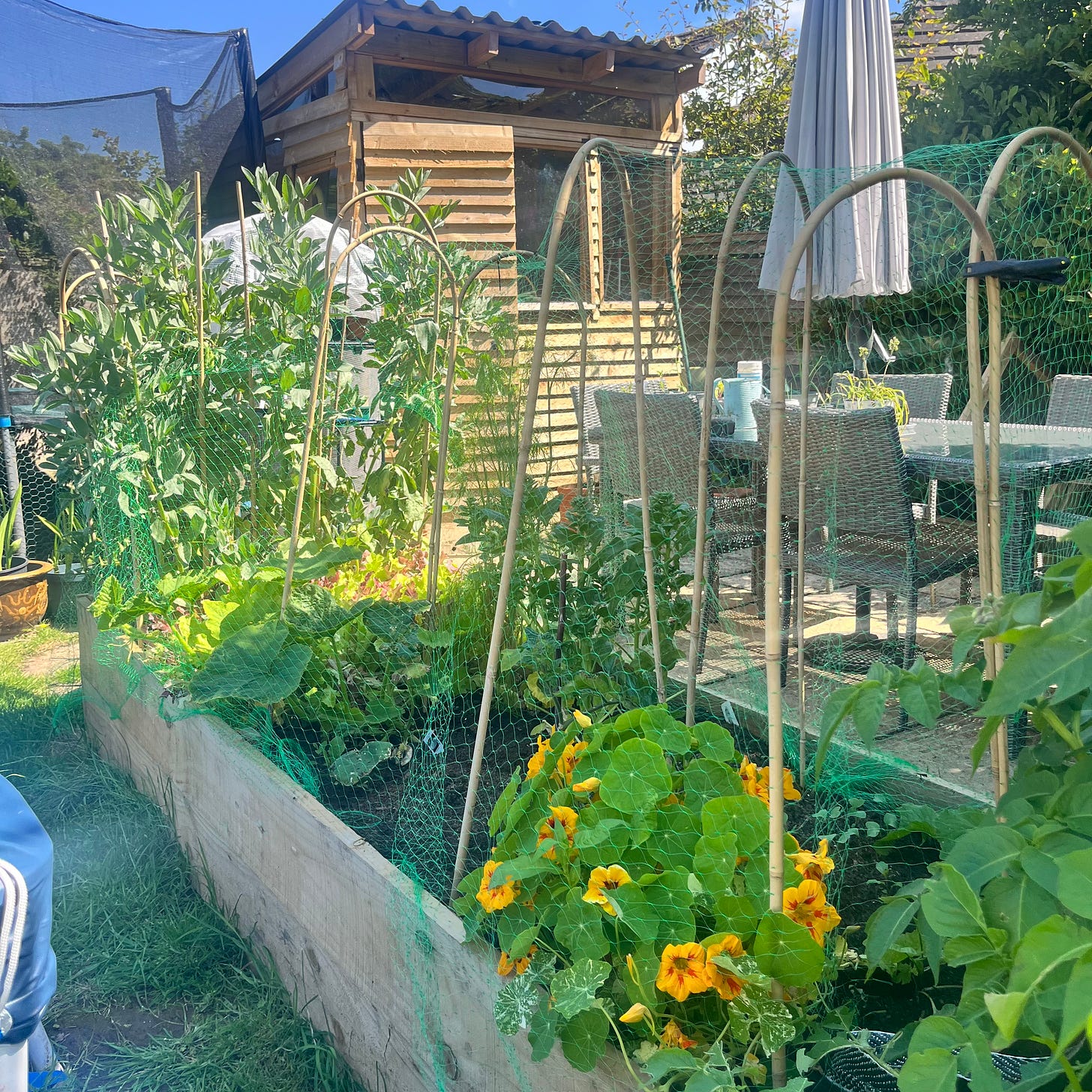
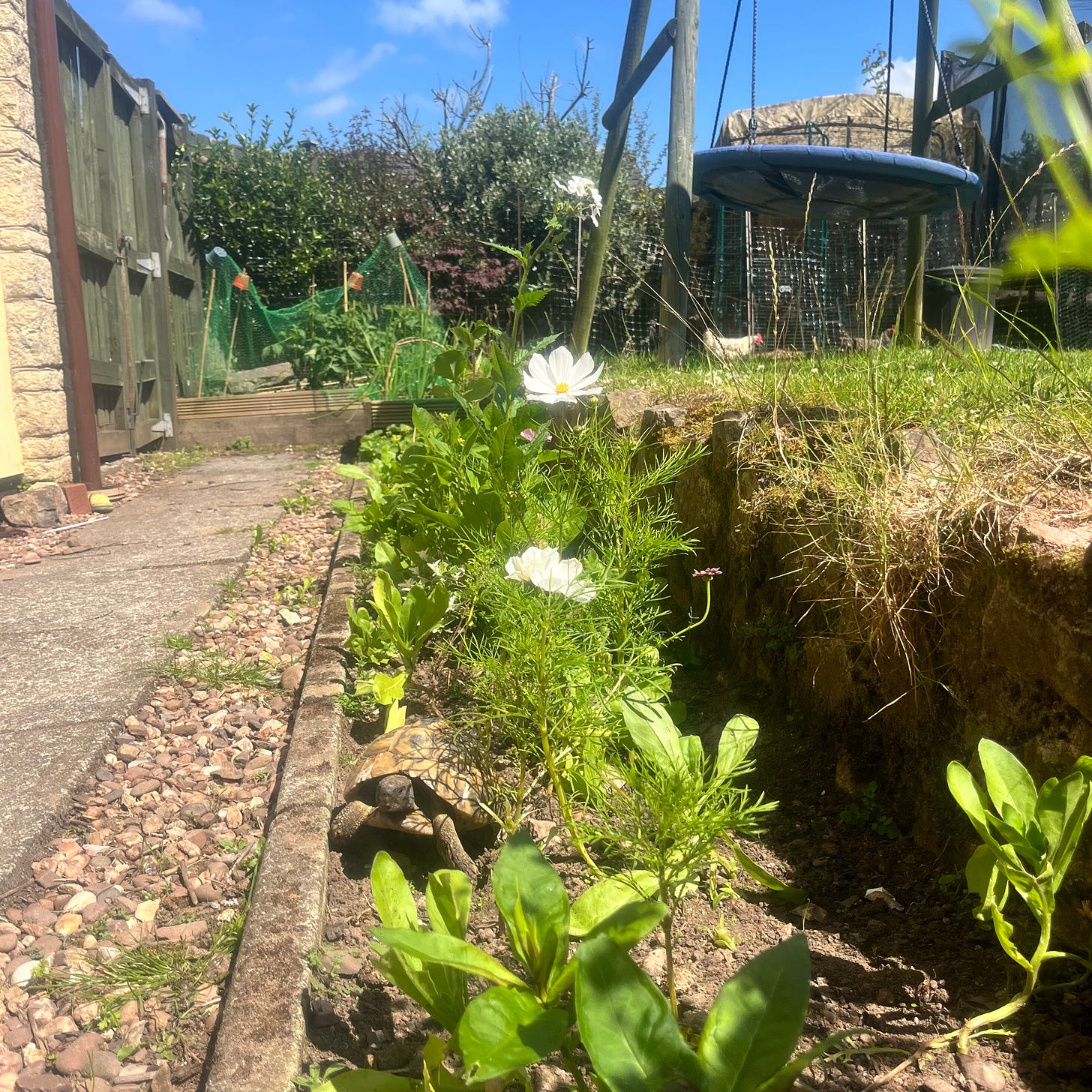
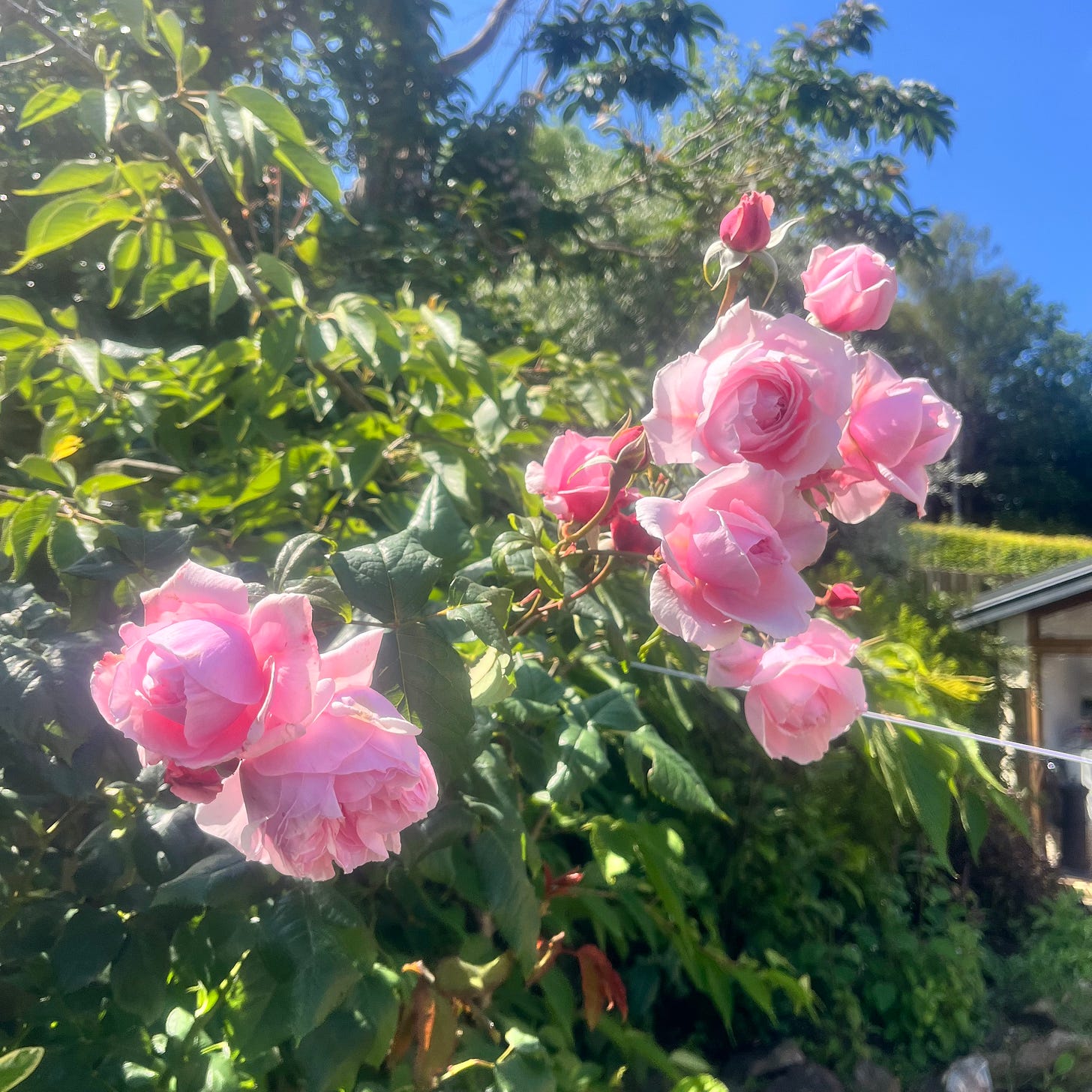
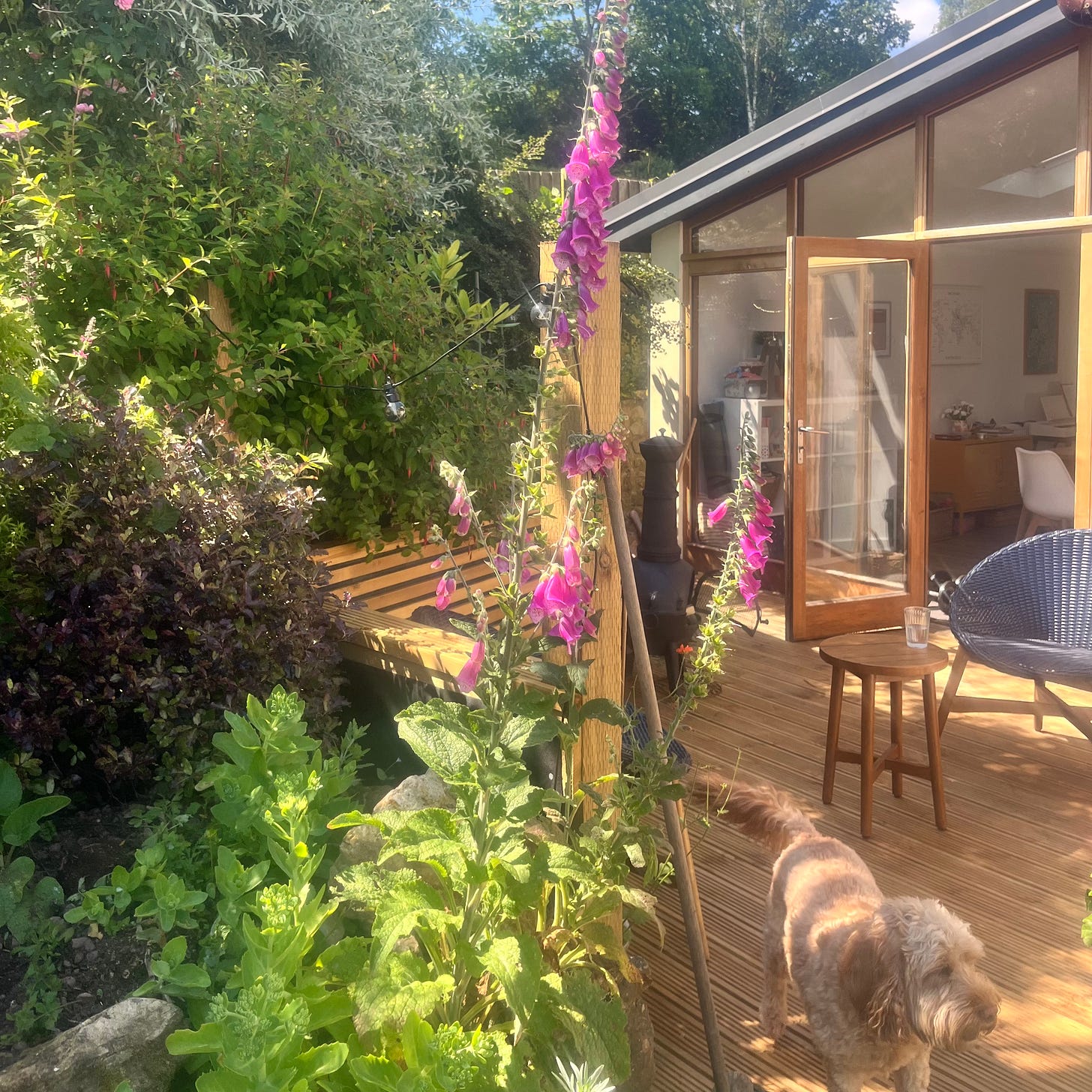
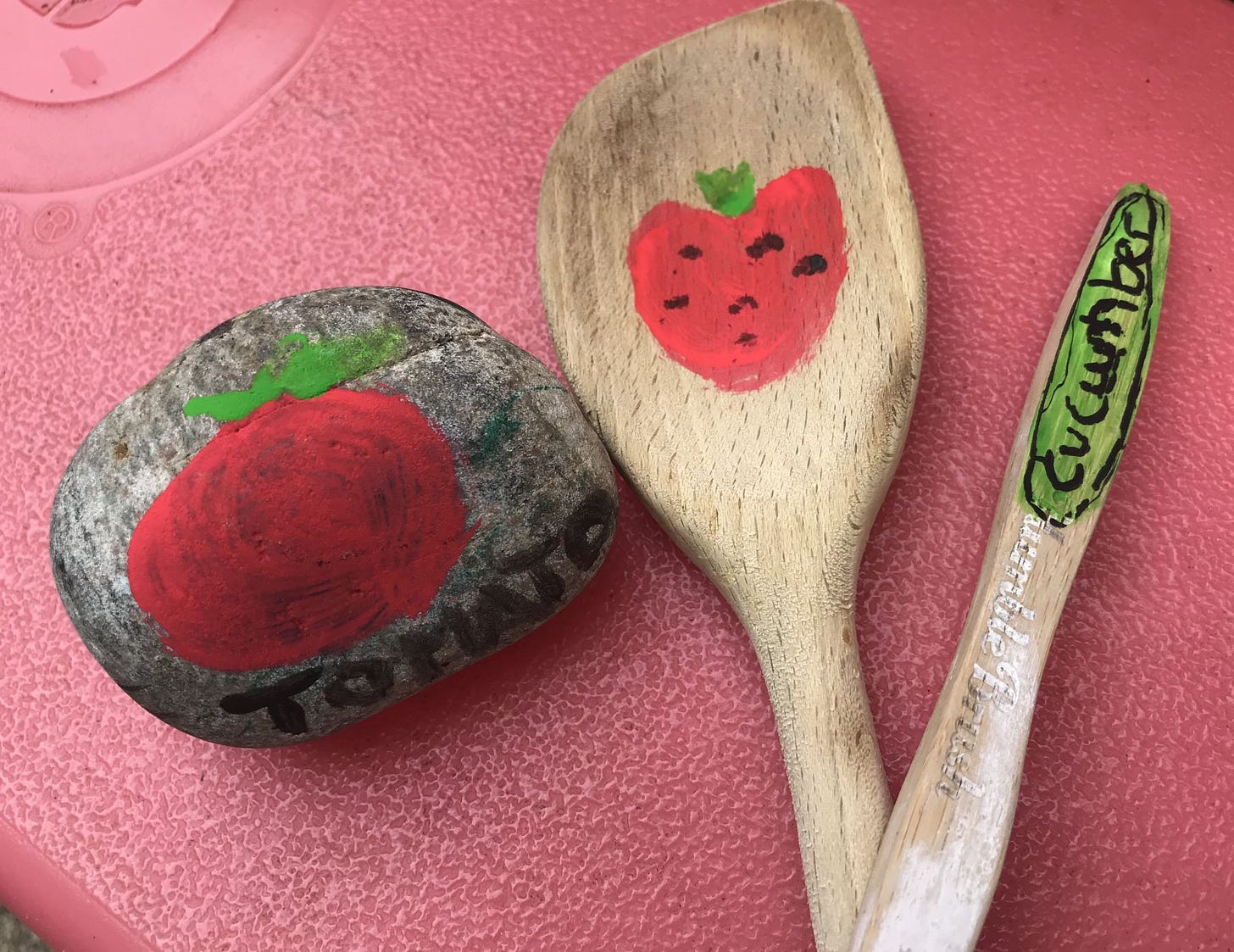
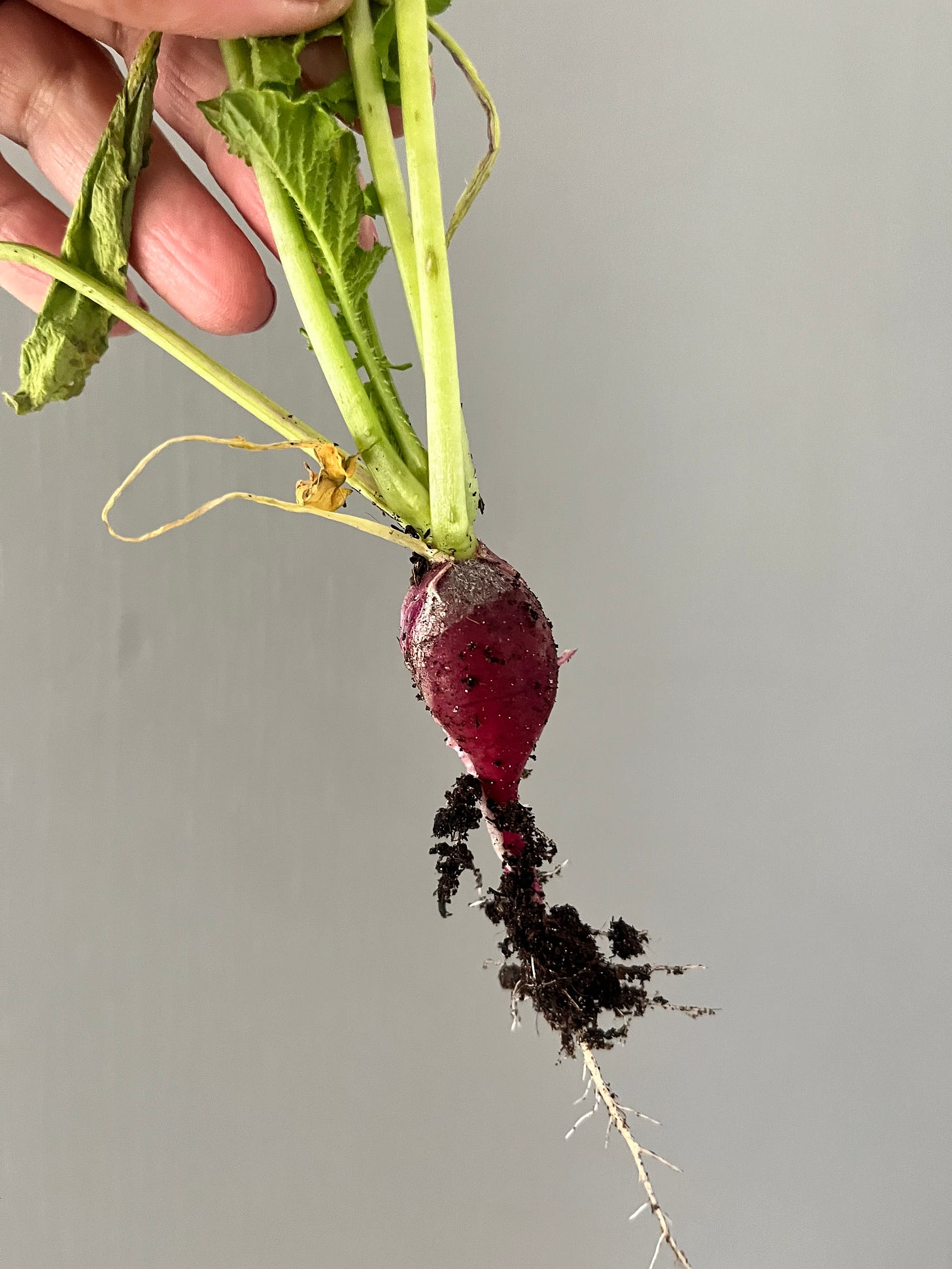


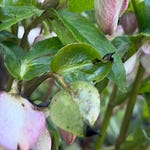
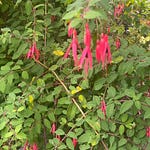
Share this post